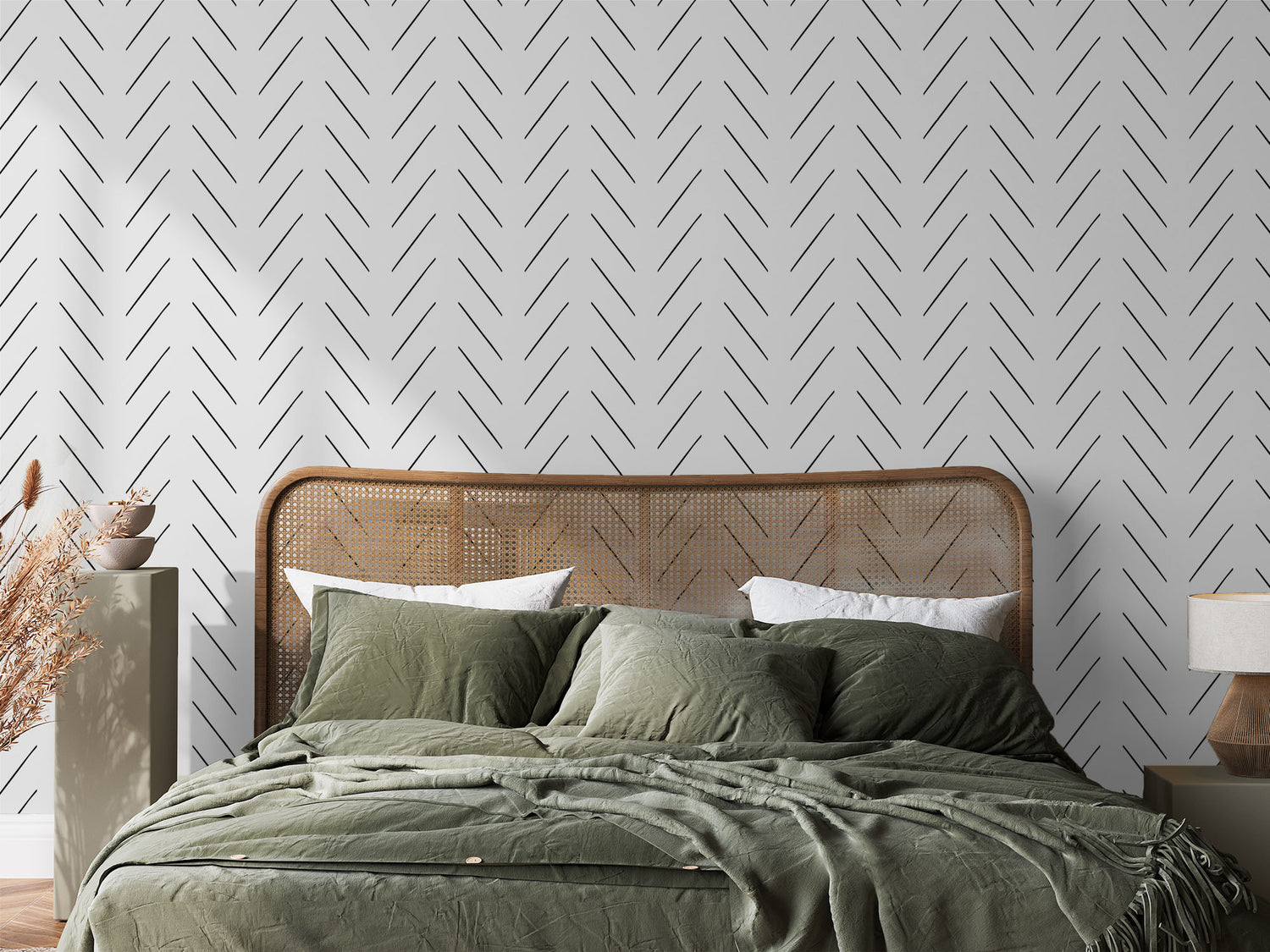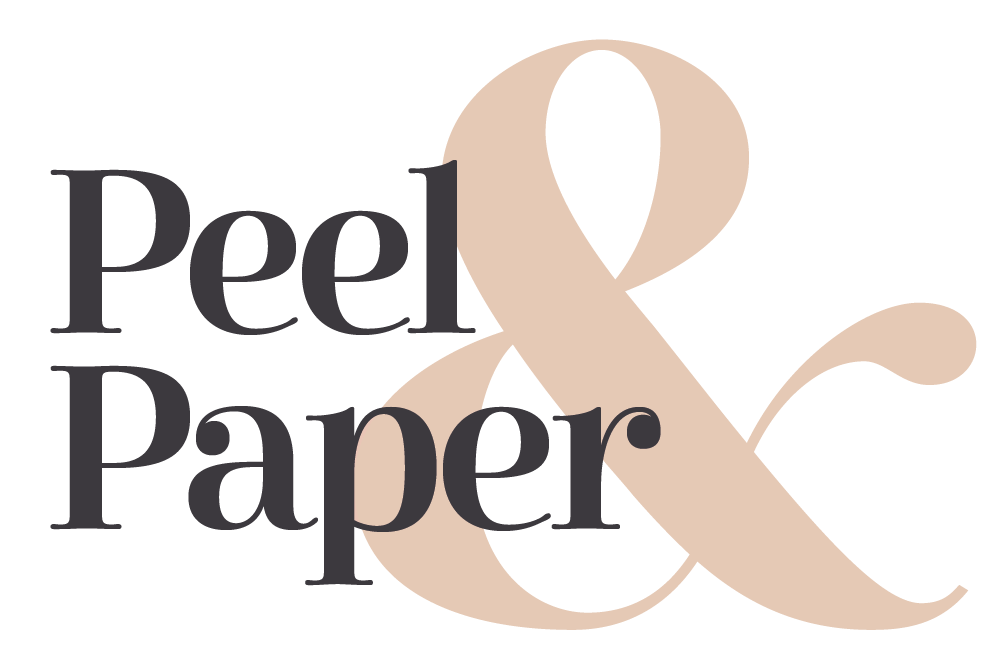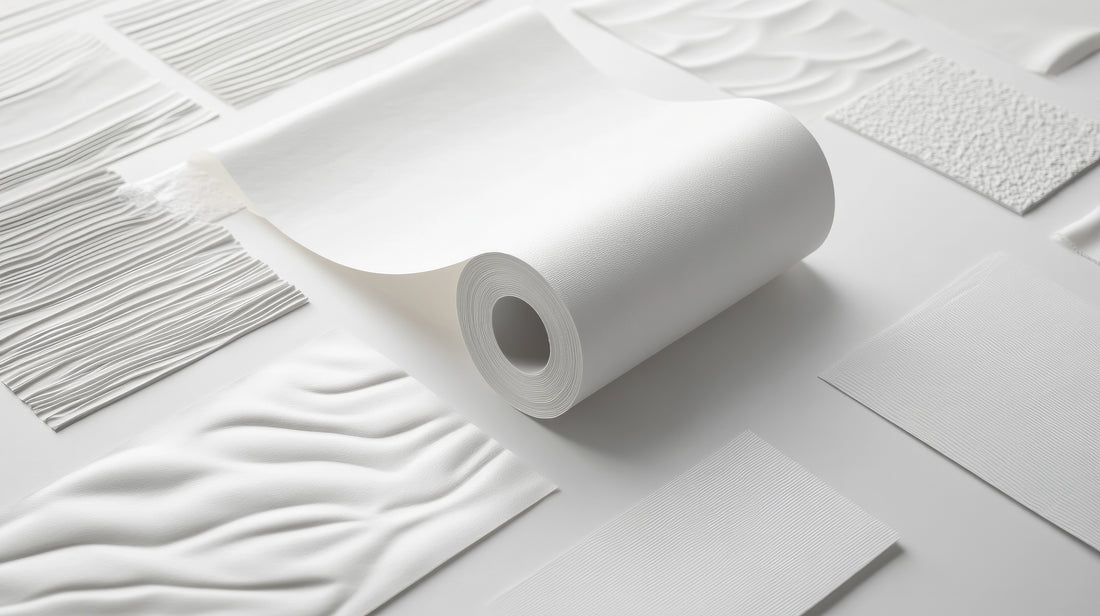Introduction
Thinking about sprucing up your space but unsure if wallpaper will stick to your walls? You’re not alone. Many homeowners face the challenge of wanting to refresh their interiors but are unsure whether wallpaper will adhere to their specific surfaces. From textured walls to glossy paint, and from wood paneling to concrete, not all surfaces are created equal when it comes to wallpaper application.
Understanding which surfaces work best for wallpaper is crucial to achieving a smooth, long-lasting finish. Choosing the right wallpaper material—whether it’s peel-and-stick vinyl, traditional paste, or a more durable option—can make all the difference in ensuring your project’s success.
In this guide, we’ll cover a wide range of surfaces you might be considering for your next wallpaper project. We’ll explore common and uncommon surfaces, provide practical tips, and recommend the best wallpaper types for each scenario. Whether you’re dealing with tiles, plaster, metal, or even cinder blocks, this guide will help you make informed decisions and avoid costly mistakes.
Section 1: What Influences Adhesion?
The success of your wallpaper application largely depends on how well it adheres to the surface. Key factors influencing adhesion include surface texture, material type, and the type of wallpaper you choose.
Surface Texture: Smooth, Rough, and Porous Surfaces
- Smooth Surfaces: Ideal for wallpaper application as they allow for strong adhesion without bubbles or peeling.
- Rough Surfaces: Uneven surfaces like brick or textured plaster can lead to poor adhesion. Preparation, such as sanding or using a liner, may be necessary.
- Porous Surfaces: Materials like untreated wood or plaster absorb moisture, weakening adhesive over time. Priming these surfaces is essential.
Material Type: Interaction with Wallpaper Adhesives
- Wood and Wood-Based Surfaces: These can absorb moisture from adhesives, causing issues. Priming or using peel-and-stick options can help.
- Non-Porous Surfaces: Glass, metal, and plastic require strong adhesives, like those found in peel-and-stick vinyl, for better grip.
Types of Wallpaper: Choosing the Right Option
- Peel and Stick Wallpaper: Best for smooth, non-porous surfaces. Easy to apply and remove.
- Paste the Wall Wallpaper: Suitable for a variety of primed surfaces, offering durability but requiring more prep.
- Peel and Stick Vinyl: Ideal for textured or moisture-prone surfaces like tile or concrete.
Understanding these factors helps ensure successful wallpaper application on your chosen surface.
Section 2: Common Wall Types and Textures
When considering wallpaper, it’s essential to start with the most common wall types and textures found in homes. These factors play a significant role in how well your wallpaper will adhere and look once applied.
Common Wall Types
Most homeowners deal with standard wall types like drywall, plaster, or wood paneling. These surfaces, when properly prepared, typically work well with various wallpaper types. However, the texture of these walls can significantly impact the application process and the final appearance.
Common Wall Textures
- Orange Peel Texture: This subtle, dimpled texture is common in many homes. While it’s relatively smooth, some textures may still cause minor issues with adhesion. Peel & Paper’s peel and stick vinyl is designed to work well with orange peel textures, adhering smoothly without bubbles.
- Knockdown Texture: A more pronounced texture, knockdown walls can pose a challenge for traditional wallpapers. For best results, consider lightly sanding the surface to reduce roughness or apply a lining paper before wallpapering. Peel & Paper’s vinyl option is also well-suited for these surfaces, offering better adhesion than standard wallpaper.
- Popcorn Texture: Popcorn ceilings and walls are among the most challenging surfaces for wallpaper. Due to their rough, uneven surface, wallpaper may not adhere well without significant preparation. Sanding or applying a skim coat can help smooth the surface, but in most cases, it’s recommended to remove the texture entirely before wallpapering.
For those dealing with more heavily textured walls, proper preparation is key. Sanding or applying a liner can make the surface more suitable for wallpaper. Additionally, any surface in a wet or humid environment will require Peel & Paper’s vinyl wallpaper, which is designed to withstand moisture and ensure long-lasting adhesion.
If you’re dealing with textured walls and want more detailed advice, be sure to check out our other article on wallpapering textured walls.
In the next section, we’ll dive into various other surfaces, discussing their unique characteristics and how best to prepare them for wallpaper application.
Section 3: Wallpapering Unusual Surfaces
In this section, we’ll explore various less common surfaces where you might want to apply wallpaper. For each surface, we’ll discuss its characteristics, the best wallpaper types to use, and any special preparation required to ensure a successful application.
Tile Surfaces
- Characteristics: Tiles are typically found in bathrooms and kitchens. They present a smooth, but often uneven surface due to grout lines.
- Wallpaper Application: In general, wallpaper does not adhere well to tiles. However, Peel & Paper’s peel and stick vinyl can sometimes stick to ceramic tiles, especially if the grout lines are filled in first. This creates a flatter surface for the wallpaper to adhere to.
- Preparation Tips: We recommend ordering a sample of our peel and stick vinyl to test adhesion on your tile before committing to a large project. Avoid applying wallpaper in areas with direct water exposure, such as inside showers.
Wood Surfaces

- Characteristics: Wood surfaces can include wood paneling, plywood, and hardwood. These surfaces can be porous and may require special preparation.
- Wallpaper Application: For wood paneling, clean the panels thoroughly and consider applying a liner paper for better adhesion. For plywood and hardwood, priming is necessary to seal the surface before applying wallpaper.
- Preparation Tips: Once primed, any of our wallpaper types can be applied to wood surfaces, ensuring a smooth and lasting finish.
Laminate Surfaces

- Characteristics: Laminate is often used in kitchens and bathrooms, providing a smooth, non-porous surface.
- Wallpaper Application: Laminate surfaces are ideal for Peel & Paper’s peel and stick wallpaper or vinyl, with the latter being more durable and resistant to heat and humidity.
- Preparation Tips: Avoid using wallpaper on laminate surfaces exposed to direct water, such as in showers.
Plastic Surfaces
- Characteristics: Plastic surfaces are commonly found in various household items or panels.
- Wallpaper Application: Due to their smooth nature, plastic surfaces are well-suited for Peel & Paper’s peel and stick wallpaper or vinyl.
- Preparation Tips: Ensure the plastic surface is clean and dry before applying wallpaper for optimal adhesion.
Plaster Surfaces

- Characteristics: Plaster can be smooth or slightly textured and is commonly used in older homes.
- Wallpaper Application: All types of Peel & Paper wallpaper will adhere well to plaster, provided the surface is smooth, primed, and free of cracks or holes. For slightly textured plaster, the peel and stick vinyl is recommended.
- Preparation Tips: For heavily textured plaster, consider sanding, priming, and possibly applying a lining paper before wallpapering.
MDF

- Characteristics: MDF (Medium-Density Fiberboard) is often used for furniture and wall panels.
- Wallpaper Application: MDF must be primed before applying wallpaper. This prevents the MDF from absorbing moisture and ensures a strong adhesive bond.
- Preparation Tips: After priming, any type of Peel & Paper wallpaper can be applied, making MDF a versatile option for creative wallpaper applications.
Glass

- Characteristics: Glass surfaces are non-porous and completely smooth, often found in windows or glass partitions.
- Wallpaper Application: Peel and stick vinyl is the best option for glass, providing both durability and adhesion, especially in humid environments.
- Preparation Tips: Glass murals can be used for privacy or decoration, and peel-and-stick wallpaper is excellent for updating outdated glass features.
Metal

- Characteristics: Metal surfaces are non-porous and smooth but may require special preparation for optimal wallpaper adhesion.
- Wallpaper Application: Peel and stick vinyl works best on metal surfaces. Before application, metal should be primed to enhance adhesion.
- Preparation Tips: Ensure the metal surface is clean and rust-free before applying wallpaper.
Gloss Paint

- Characteristics: Walls painted with semi-gloss or glossy paint are smooth and often less porous than matte finishes.
- Wallpaper Application: Peel and stick wallpaper, vinyl, or paste-the-wall options can all work well on gloss paint, as long as the paint is sound and secure.
- Preparation Tips: Clean the painted surface thoroughly and ensure the paint is not peeling or flaking before applying wallpaper.
Polystyrene

- Characteristics: Polystyrene is porous and uneven, making it challenging for wallpaper adhesion.
- Wallpaper Application: It is generally not recommended to apply wallpaper to polystyrene due to its porous nature and uneven surface.
- Preparation Tips: Consider alternative methods for covering polystyrene surfaces, such as painting or using decorative panels.
Concrete

- Characteristics: Concrete surfaces are durable but can be rough and porous, often found in basements or modern industrial designs.
- Wallpaper Application: Peel and stick vinyl is the best choice for concrete, offering strong adhesion and durability.
- Preparation Tips: Clean and prime the concrete surface before applying wallpaper to ensure the best results.
Cinder Block
- Characteristics: Cinder blocks have an uneven, porous surface, often used in basements or utility areas.
- Wallpaper Application: Peel and stick vinyl can adhere to cinder block, but the block’s texture may show through. Using a wallpaper liner or filling in the gaps between blocks can create a smoother surface for better adhesion.
- Preparation Tips: Consider using a lining paper or filling in gaps before applying wallpaper to cinder blocks for a more uniform finish.
Section 4: Troubleshooting Common Adhesion Issues
Even with careful preparation, adhesion issues can occur. Here’s how to tackle the most common problems:
Bubbling and Peeling
- Causes: Often due to dirty surfaces, moisture, or improper smoothing during application.
- Solutions: Ensure surfaces are clean, dry, and primed. Smooth wallpaper as you apply it, using a tool to eliminate air bubbles. For persistent bubbles, puncture with a pin and smooth them out.
Uneven Adhesion
- Causes: Happens on textured or porous surfaces where wallpaper doesn’t stick uniformly.
- Solutions: Apply a lining paper to create a smooth base. If areas lift, reapply adhesive and press down firmly, especially along edges.
Removing Wallpaper
- Peel and Stick: Gently peel off, using a hairdryer to warm and soften adhesive if needed.
- Paste the Wall: Soak with warm water, then peel off, using a scraper for tough spots. Clean any adhesive residue before reapplying.
Section 5: Frequently Asked Questions (FAQ)
In this section, we address some of the most common questions customers have about applying wallpaper to various surfaces.
Can Wallpaper Be Applied in Bathrooms?
Answer: Yes, wallpaper can be applied in bathrooms, but it’s essential to choose the right type. Peel & Paper’s peel and stick vinyl wallpaper is ideal for bathrooms because it’s designed to withstand water splashes and high humidity. Avoid applying wallpaper directly in areas with constant water exposure, like inside showers.
Is There a Surface Wallpaper Definitely Won’t Stick To?
Answer: Wallpaper struggles to adhere to highly textured or porous surfaces, such as unprepared cinder blocks, polystyrene, or heavily textured plaster. Even with prep work, these surfaces might not provide a smooth enough base for successful application. It’s crucial to choose the right wallpaper material and properly prepare the surface.
How Long Can Wallpaper Last on These Surfaces?
Answer: With proper care, wallpaper can last 10 years or more. The longevity depends on the surface preparation, the wallpaper material, and the environmental conditions. On textured or uneven surfaces, wallpaper might peel sooner, so smoothing the surface as much as possible is key for durability.
Section 6: Conclusion
In this guide, we’ve explored the many surfaces where you might want to apply wallpaper, from common walls and textured surfaces to more unusual options like tile, glass, and metal. Each surface presents unique challenges, but with the right preparation and choice of wallpaper, you can achieve a beautiful, long-lasting result.
Remember to always prepare your surface properly, choose the appropriate type of wallpaper for your specific situation, and don’t hesitate to test a sample before committing to a large project. Proper preparation and selection can make all the difference in ensuring your wallpaper sticks well and lasts for years.
If you have any further questions or need personalized advice, don’t hesitate to reach out to us. We’re here to help you transform your space with confidence. And be sure to check out our range of wallpapers designed to meet the demands of any surface you might encounter!


